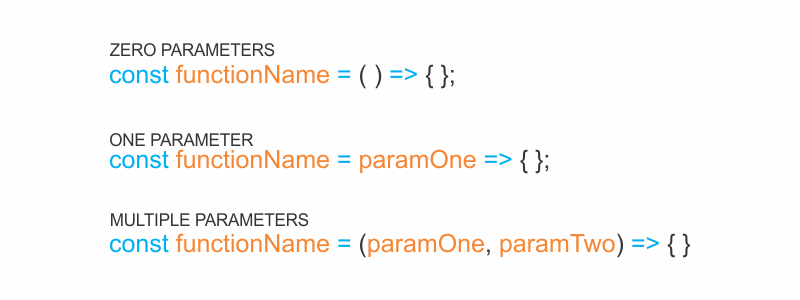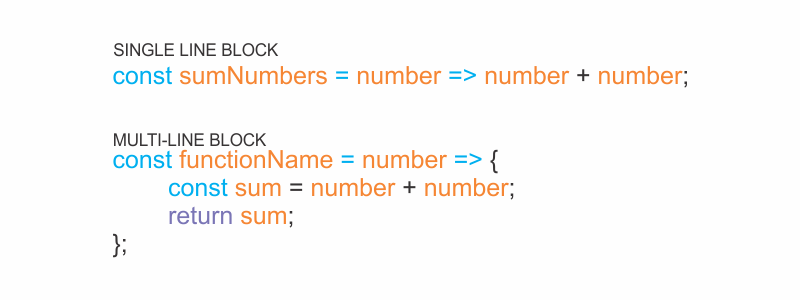Arrow Functions Explained
By Hemanta Sundaray on 2022-04-26
ES6 introduced arrow function syntax, a shorter way to write functions by using the special "fat arrow" () => notation.
Arrow functions remove the need to type out the keyword function every time you need to create a function. Instead, you first include the parameters inside the () and then add an arrow => that points to the function body surrounded in { } like this:
const rectangleArea = (width, height) => {
const area = width * height
return area
}
console.log(rectangleArea(6, 2))
// 12Concise body arrow functions
JavaScript provides several ways to refactor arrow function syntax. The most condensed form of the function is known as concise body. Below, we’ll explore a few of these techniques:
- Functions that take only a single parameter don’t need that parameter to be enclosed in parentheses. However, if a function takes zero or multiple parameters, parentheses are required.
- A function body composed of a single-line block does not need curly braces. Without the curly braces, whatever that line evaluates will be automatically returned. The contents of the block should immediately follow the arrow
=>and thereturnkeyword can be removed. This is referred to as implicit return.
So, if we have a function:
const squareNum = num => {
return num * num
}We can refactor the function to:
const squareNum = num => num * numNotice the following changes:
- The parentheses around
numhave been removed, since it has a single parameter. - The curly braces
{ }have been removed since the function consists of a single-line block. - The
returnkeyword has been removed since the function consists of a single-line block.

